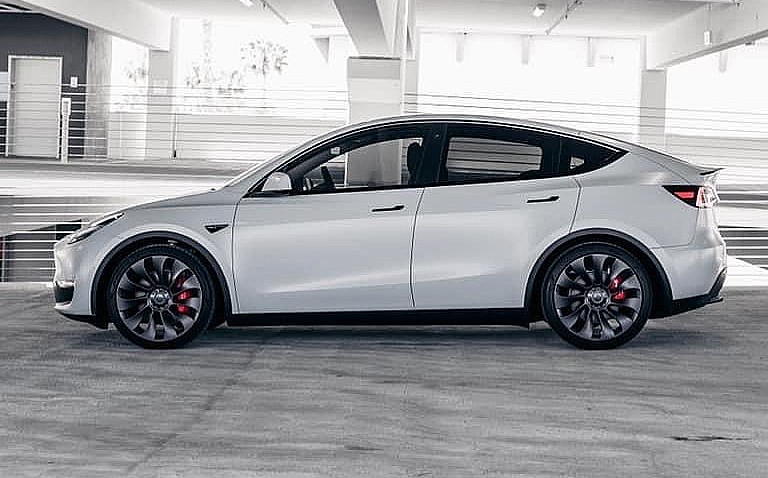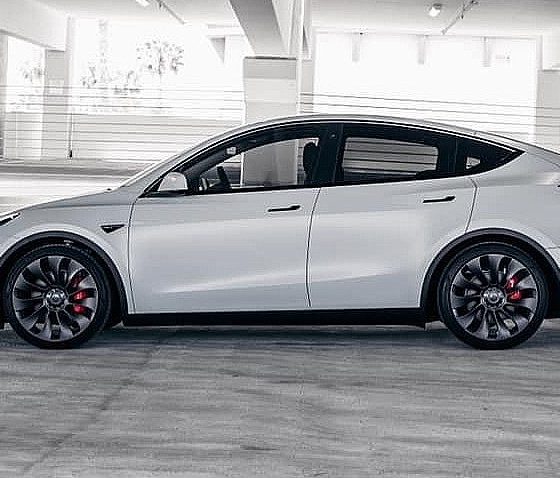

News
Tesla Autopilot ‘easily tricked’ by Consumer Reports in bizarre test
Consumer Reports claims to have shown that Tesla Autopilot can be “easily tricked” into driving without anyone in the driver’s seat. The test process was extremely bizarre and required certain items that most drivers would never have in their vehicles.
CR released a report on April 22nd entitled, “CR Engineers Show a Tesla Will Drive With No One in the Driver’s Seat.” The test was in response to the recent and very public Tesla Model S crash in Texas, where two men, unfortunately, passed away after their all-electric sedan crashed violently into a tree at a high speed. Investigators are attempting to determine whether the vehicle was “driverless,” a claim made by several mainstream media outlets. CEO Elon Musk chimed in just days after the crash and the very public coverage of it to say that it would be impossible for Autopilot to function on the road where the crash occurred due to the lack of road lines, which are required to initiate the use of Basic Autopilot.
Tesla alleged “driverless” crash in Texas: What is known so far
The CR test required the vehicle, a Tesla Model Y, to be in motion, and engineers then engaged Autopilot and set the speed dial to 0, which brought the car to a stop. Next, Jake Fisher, CR’s Senior Director of Auto Testing, placed a “small, weighted chain on the steering wheel, to simulate the weight of a driver’s hand, and slid over into the front passenger seat without opening any of the vehicle’s doors, because that would disengage Autopilot.” The Autopilot speed was then adjusted so that the vehicle would accelerate from its stationary position. The car managed to drive up and down the half-mile lane of the CR test track, although nobody was in the seat or controlling the vehicle. “It was a bit frightening when we realized how easy it was to defeat the safeguards, which we proved were clearly insufficient,” Fisher said. The engineers encouraged nobody to try the experiment at home, but who will have a custom weighted chain sitting around to experiment with anyway?
“In our evaluation, the system not only failed to make sure the driver was paying attention, but it also couldn’t tell if there was a driver there at all,” Fisher added, but he wasn’t done throwing shade at Tesla. “Tesla is falling behind other automakers like GM and Ford that, on models with advanced driver assist systems, use technology to make sure the driver is looking at the road.” GM’s SuperCruise and Ford’s recently released BlueCruise are what Fisher is referencing, but the comparisons don’t really add up.
Tesla Autopilot has over 23 billion real-world miles of data that is stored in a Neural Network to improve performance. With every mile driven, Tesla’s semi-autonomous driving functionalities become more robust, more precise, and more adaptable to human behavior. Ford and GM have accumulated only a fraction of these statistics. Tesla, meanwhile, recently reported its Q1 2021 Safety Report, where it found that Autopilot is nearly 10 times safer than human driving.
Tesla’s Q1 2021 accident data shows Autopilot is closing in on being 10X safer than humans
The test performed by CR is extremely bizarre because people would not normally have all of these things in their vehicle or even in their possession, to begin with. Tesla maintains that drivers are responsible for remaining attentive during the entirety of their driving experience. The company has never claimed to have released a program capable of Level 5 autonomy where a driver needs to pay no attention to the road or the vehicle’s surroundings. Yet, Tesla’s very-publicized crash raises questions from those who have a historical distaste for the company and its products. Consumer Reports has not been keen on Tesla in the past. They have indicated that GM’s SuperCruise, despite being less effective or safe than Autopilot based on data, holds a commanding lead over Tesla’s semi-autonomous driving program.
It is worth noting that Tesla has several safety thresholds that would prohibit anyone from attempting to let the vehicle drive itself. These include a steering wheel monitoring system, which will bring the car to a complete stop if the driver is not holding it. The system also requires a driver to be in the seat to function, and the company recently revoked FSD software from several drivers who were abusing the program by being inattentive. More safety features, like a facial features recognition camera, will monitor the driver’s eyes and face to ensure they are paying attention to the road.
What are your thoughts on the CR study? Let us know in the comments, or let me know at @KlenderJoey on Twitter. You can email me at joey@teslarati.com as well.

Elon Musk
SpaceX issues statement on Starship V3 Booster 18 anomaly
The incident unfolded during gas-system pressure testing at the company’s Massey facility in Starbase, Texas.

SpaceX has issued an initial statement about Starship Booster 18’s anomaly early Friday. The incident unfolded during gas-system pressure testing at the company’s Massey facility in Starbase, Texas.
SpaceX’s initial comment
As per SpaceX in a post on its official account on social media platform X, Booster 18 was undergoing gas system pressure tests when the anomaly happened. Despite the nature of the incident, the company emphasized that no propellant was loaded, no engines were installed, and personnel were kept at a safe distance from the booster, resulting in zero injuries.
“Booster 18 suffered an anomaly during gas system pressure testing that we were conducting in advance of structural proof testing. No propellant was on the vehicle, and engines were not yet installed. The teams need time to investigate before we are confident of the cause. No one was injured as we maintain a safe distance for personnel during this type of testing. The site remains clear and we are working plans to safely reenter the site,” SpaceX wrote in its post on X.
Incident and aftermath
Livestream footage from LabPadre showed Booster 18’s lower half crumpling around the liquid oxygen tank area at approximately 4:04 a.m. CT. Subsequent images posted by on-site observers revealed extensive deformation across the booster’s lower structure. Needless to say, spaceflight observers have noted that Booster 18 would likely be a complete loss due to its anomaly.
Booster 18 had rolled out only a day earlier and was one of the first vehicles in the Starship V3 program. The V3 series incorporates structural reinforcements and reliability upgrades intended to prepare Starship for rapid-reuse testing and eventual tower-catch operations. Elon Musk has been optimistic about Starship V3, previously noting on X that the spacecraft might be able to complete initial missions to Mars.
Investor's Corner
Tesla analyst maintains $500 PT, says FSD drives better than humans now
The team also met with Tesla leaders for more than an hour to discuss autonomy, chip development, and upcoming deployment plans.

Tesla (NASDAQ:TSLA) received fresh support from Piper Sandler this week after analysts toured the Fremont Factory and tested the company’s latest Full Self-Driving software. The firm reaffirmed its $500 price target, stating that FSD V14 delivered a notably smooth robotaxi demonstration and may already perform at levels comparable to, if not better than, average human drivers.
The team also met with Tesla leaders for more than an hour to discuss autonomy, chip development, and upcoming deployment plans.
Analysts highlight autonomy progress
During more than 75 minutes of focused discussions, analysts reportedly focused on FSD v14’s updates. Piper Sandler’s team pointed to meaningful strides in perception, object handling, and overall ride smoothness during the robotaxi demo.
The visit also included discussions on updates to Tesla’s in-house chip initiatives, its Optimus program, and the growth of the company’s battery storage business. Analysts noted that Tesla continues refining cost structures and capital expenditure expectations, which are key elements in future margin recovery, as noted in a Yahoo Finance report.
Analyst Alexander Potter noted that “we think FSD is a truly impressive product that is (probably) already better at driving than the average American.” This conclusion was strengthened by what he described as a “flawless robotaxi ride to the hotel.”
Street targets diverge on TSLA
While Piper Sandler stands by its $500 target, it is not the highest estimate on the Street. Wedbush, for one, has a $600 per share price target for TSLA stock.
Other institutions have also weighed in on TSLA stock as of late. HSBC reiterated a Reduce rating with a $131 target, citing a gap between earnings fundamentals and the company’s market value. By contrast, TD Cowen maintained a Buy rating and a $509 target, pointing to strong autonomous driving demonstrations in Austin and the pace of software-driven improvements.
Stifel analysts also lifted their price target for Tesla to $508 per share over the company’s ongoing robotaxi and FSD programs.
Elon Musk
SpaceX Starship Version 3 booster crumples in early testing
Photos of the incident’s aftermath suggest that Booster 18 will likely be retired.

SpaceX’s new Starship first-stage booster, Booster 18, suffered major damage early Friday during its first round of testing in Starbase, Texas, just one day after rolling out of the factory.
Based on videos of the incident, the lower section of the rocket booster appeared to crumple during a pressurization test. Photos of the incident’s aftermath suggest that Booster 18 will likely be retired.
Booster test failure
SpaceX began structural and propellant-system verification tests on Booster 18 Thursday night at the Massey’s Test Site, only a few miles from Starbase’s production facilities, as noted in an Ars Technica report. At 4:04 a.m. CT on Friday, a livestream from LabPadre Space captured the booster’s lower half experiencing a sudden destructive event around its liquid oxygen tank section. Post-incident images, shared on X by @StarshipGazer, showed notable deformation in the booster’s lower structure.
Neither SpaceX nor Elon Musk had commented as of Friday morning, but the vehicle’s condition suggests it is likely a complete loss. This is quite unfortunate, as Booster 18 is already part of the Starship V3 program, which includes design fixes and upgrades intended to improve reliability. While SpaceX maintains a rather rapid Starship production line in Starbase, Booster 18 was generally expected to validate the improvements implemented in the V3 program.
Tight deadlines
SpaceX needs Starship boosters and upper stages to begin demonstrating rapid reuse, tower catches, and early operational Starlink missions over the next two years. More critically, NASA’s Artemis program depends on an on-orbit refueling test in the second half of 2026, a requirement for the vehicle’s expected crewed lunar landing around 2028.
While SpaceX is known for diagnosing failures quickly and returning to testing at unmatched speed, losing the newest-generation booster at the very start of its campaign highlights the immense challenge involved in scaling Starship into a reliable, high-cadence launch system. SpaceX, however, is known for getting things done quickly, so it would not be a surprise if the company manages to figure out what happened to Booster 18 in the near future.








